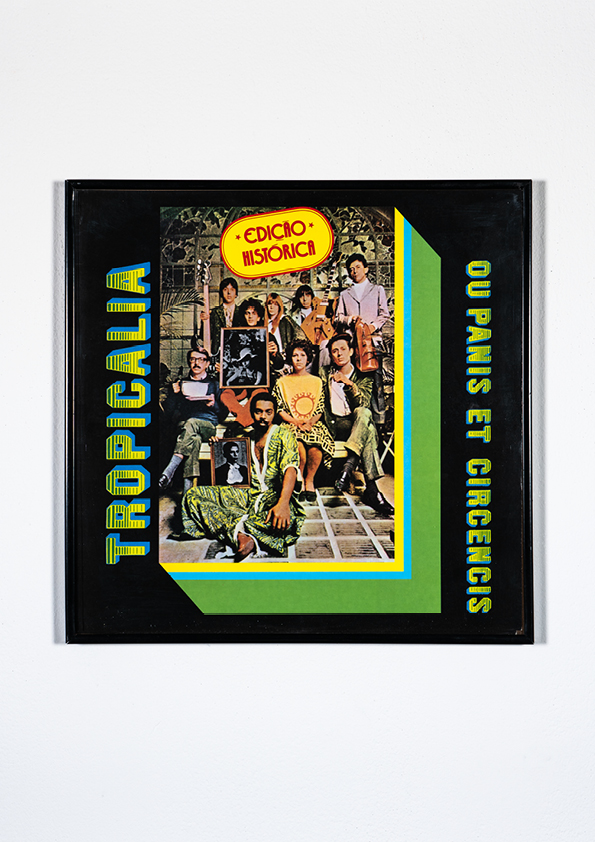Tropicália Ou Panis et Circensis LP sleeve
1968, 32.5 x 32.5 cm

In the 1960s, the question of national identity loomed large in third world post-colonial and anti-imperialist movements. Looking back in his 1997 memoir Tropical Truth, the musician Caetano Veloso writes that the goal of the Tropicalists was “to free ourselves from the Brazil we knew. We had to destroy the Brazil of the nationalists ... and do away once and for all with its image.” At the same time, the artist Helio Oiticica argued in favor of the “immediate reduction of all external influences to national models.” The National was also a signifier for countercultures elsewhere in the Western world. It could be difficult to distinguish the hippie tribe from the national demographic, and the yippies professed a love/hate relationship to their “Amerika.” In an early essay on the hippies, British cultural critic Stuart Hall remarked that even Time magazine couldn’t help noticing a “pure American species” under “the long hair, the beads and the kaftans,” while philosopher Marshall Berman commented on a similarity of spirit between “the megalomaniac in the White House” and those protesting outside the Pentagon, shouting the words of The Doors’ song: “We want the world and we want it now!”
Since the poet Oswald de Andrade wrote his Manifesto antropofago — literally, “manifesto of human-eating”— in 1928, cannibalism has been a revenant concept for a specifically Brazilian social identity. A brain-child of the Latin American avant-garde, antropafagia was a critical concept for the movimento modernista and post-war aesthetic experimentation generally, most prominently the 1960s counterculture that came to be called “Tropicália.” Artists like Oiticica rejected Anglo-American psychedelia and proposed instead the concept of the “suprasensorial” as an explicit alternative to the example of Leary and co.— a rejection that questioned psychedelia’s universal status, as well as its formative relation to countercultures outside the U.S. As a quasi-mythical cannibalization of symbolic forms, then, antropafagia offers yet another perspective on psychedelia’s perpetual proliferation.
– “Black and White Psychedelia,” Dexter Bang Sinister, Bulletins of The Serving Library #4, 2012
Go back
